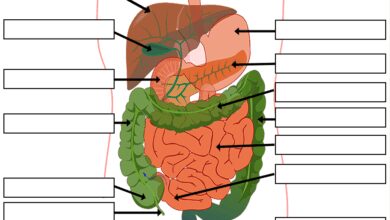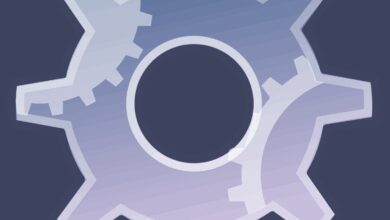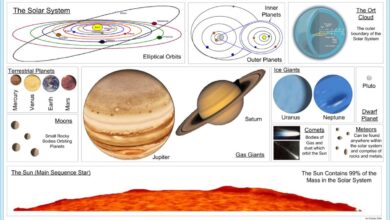System Design Interview: 7 Ultimate Tips to Crush Your Next Tech Interview
Landing your dream tech job often comes down to one intense challenge: the system design interview. It’s not just about coding—it’s about thinking big, scaling smart, and communicating clearly under pressure. Let’s break down how to master it.
What Is a System Design Interview?

A system design interview is a critical component of the hiring process for software engineering, backend development, and architecture roles at top-tier tech companies like Google, Amazon, Meta, and Netflix. Unlike coding interviews that focus on algorithms and data structures, system design interviews assess your ability to design scalable, reliable, and maintainable systems from scratch.
These interviews simulate real-world engineering challenges. You might be asked to design a URL shortening service like bit.ly, a social media feed like Twitter, or a distributed file storage system like Google Drive. The goal isn’t to arrive at a single correct answer but to demonstrate structured thinking, trade-off analysis, and deep technical knowledge.
Core Objectives of the Interview
The interviewer evaluates several key competencies during a system design interview. First and foremost is problem decomposition—can you break down a large, ambiguous problem into manageable components? Next is your understanding of system architecture principles, including load balancing, database scaling, caching strategies, and fault tolerance.
Communication is equally vital. You must articulate your thought process clearly, ask clarifying questions, and adapt based on feedback. According to Google’s engineering blog, engineers who perform well in system design interviews often exhibit strong collaboration skills and the ability to think long-term about system evolution.
Common Formats and Question Types
System design interviews typically last 45 to 60 minutes and are conducted either in person or via video call with a shared whiteboard tool like Miro or Excalidraw. Questions fall into two broad categories: high-level design (HLD) and low-level design (LLD).
- High-Level Design (HLD): Focuses on overall architecture, such as designing a ride-sharing app or a video streaming platform.
- Low-Level Design (LLD): Delves into class structures, APIs, and detailed interactions—more common in object-oriented design rounds.
Examples include designing a chat application, a distributed key-value store, or a recommendation engine. Each requires different layers of abstraction and depth of technical insight.
“The best system designers don’t just build systems—they anticipate failure, scale, and change.” — Staff Engineer at Meta
Why System Design Interviews Matter
In modern software development, especially in cloud-native and microservices environments, the ability to design robust systems is non-negotiable. A single poorly designed component can cascade into downtime, data loss, or security vulnerabilities. That’s why companies invest heavily in evaluating this skill during hiring.
system design interview – System design interview menjadi aspek penting yang dibahas di sini.
System design interviews act as a proxy for real-world engineering judgment. They reveal how candidates approach ambiguity, prioritize requirements, and balance competing constraints like latency, consistency, availability, and cost.
Role in Tech Hiring at Top Companies
At FAANG+ companies (Facebook, Amazon, Apple, Netflix, Google, and others), system design rounds are often the final gate before an offer. For senior roles (L5 and above), they carry even more weight than coding tests. A strong performance signals leadership potential, architectural maturity, and the ability to mentor junior engineers.
According to a 2023 report by Levels.fyi, over 78% of engineers who received offers at top tech firms reported clearing at least one system design round successfully. This underscores its importance in the evaluation pipeline.
Impact on Career Growth and Promotions
Mastering system design isn’t just useful for getting hired—it’s essential for career advancement. As engineers move into senior, staff, or principal roles, their responsibilities shift from writing code to shaping system architecture.
Engineers who can design systems that scale to millions of users are often fast-tracked for promotions. They’re also more likely to lead high-impact projects, influence product roadmaps, and represent their teams in cross-functional discussions with product managers and executives.
“At the staff level, your value isn’t measured by lines of code, but by the systems you design.” — Principal Engineer at Amazon
Key Skills Needed for a Successful System Design Interview
Passing a system design interview requires more than memorizing patterns. It demands a blend of technical depth, structured thinking, and interpersonal communication. Let’s explore the core competencies you need to develop.
Scalability and Performance Optimization
One of the primary goals in system design is building systems that can handle growth—whether in users, data volume, or request rate. You must understand horizontal vs. vertical scaling, sharding strategies, replication models, and how to estimate traffic load.
For example, when designing a service like Instagram, you’d need to calculate daily active users, average photo uploads per user, storage needs, and CDN usage. Tools like back-of-the-envelope calculations (also known as “back-of-napkin” math) are essential here.
system design interview – System design interview menjadi aspek penting yang dibahas di sini.
- Estimate QPS (Queries Per Second)
- Calculate storage requirements over 5 years
- Plan for peak traffic (e.g., holiday spikes)
Understanding the CAP theorem and its implications on database choice (e.g., choosing between PostgreSQL for consistency and Cassandra for availability) is also crucial.
Knowledge of Distributed Systems
Modern applications are rarely monolithic. They’re distributed across multiple servers, regions, and clouds. You must be familiar with concepts like consensus algorithms (Paxos, Raft), distributed locking, leader election, and message queues (Kafka, RabbitMQ).
For instance, if you’re designing a payment processing system, you’ll need to ensure exactly-once delivery, prevent double-charging, and maintain transactional integrity across services. This involves understanding idempotency, retry mechanisms, and distributed tracing.
Resources like Distributed Systems by Martin Kleppmann provide deep insights into these topics and are highly recommended for preparation.
Communication and Problem-Solving Approach
Even the most brilliant design fails if you can’t explain it clearly. Interviewers look for candidates who ask clarifying questions, define assumptions upfront, and walk through trade-offs logically.
A good approach includes:
- Restating the problem and clarifying scope
- Defining functional and non-functional requirements
- Outlining constraints (e.g., latency under 200ms, 99.9% uptime)
- Proposing multiple solutions and comparing them
- Iterating based on feedback
Effective communication also means drawing clean diagrams—using boxes for services, arrows for data flow, and labels for technologies (e.g., Redis for caching, S3 for storage).
Step-by-Step Framework for Tackling Any System Design Interview
Having a repeatable framework is the single biggest advantage you can have in a system design interview. It reduces anxiety, ensures completeness, and shows the interviewer that you’re methodical.
system design interview – System design interview menjadi aspek penting yang dibahas di sini.
Step 1: Clarify Requirements
Never jump into design without understanding the problem. Start by asking questions like:
- Who are the users? (e.g., mobile app, web, API clients)
- What are the core features? (e.g., post creation, likes, comments)
- What are the scale expectations? (e.g., 1M DAU, 10K writes/sec)
- Are there geographic constraints? (e.g., global vs. regional)
- What are the latency and availability requirements?
For example, designing a global news feed for Twitter requires different considerations than a private messaging app for a small company.
Step 2: Estimate Scale and Capacity
Back-of-the-envelope estimation is a must. Use simple math to project:
- Requests per second (RPS)
- Data storage per day/year
- Bandwidth consumption
- Memory and CPU needs
Example: If 1 million users post 1 tweet/day, that’s ~12 RPS. If each tweet is 280 characters (~0.28 KB), annual storage = 1M × 365 × 0.28 KB ≈ 100 GB. Add indexes, metadata, and replication—real storage could be 300–500 GB.
This helps justify architectural choices later (e.g., do we need sharding?).
Step 3: Define API Contracts
Outline the key endpoints your system will expose. This forces clarity on functionality and data flow.
POST /tweet– Create a new tweetGET /feed?user_id=123– Get user’s timelineGET /tweets?user_id=456– Get user’s tweets
Specify request/response formats, authentication method (e.g., OAuth), and error codes. This step bridges the gap between abstract design and implementation.
Step 4: Sketch High-Level Architecture
Draw a block diagram showing major components:
system design interview – System design interview menjadi aspek penting yang dibahas di sini.
- Client (web/mobile)
- Load balancer (e.g., NGINX, AWS ELB)
- Web servers (stateless, auto-scaled)
- Application servers (business logic)
- Database (primary + read replicas)
- Cache (Redis/Memcached)
- Message queue (Kafka for async processing)
- Object storage (S3 for media)
Label data flows and highlight critical paths (e.g., tweet ingestion vs. feed delivery).
Step 5: Dive Into Data Model and Storage
Design your database schema. Decide between SQL and NoSQL based on access patterns.
For a social feed:
- Users Table: user_id, name, email, created_at
- Tweets Table: tweet_id, user_id, text, timestamp
- Follows Table: follower_id, followee_id
Consider denormalization for performance. For example, storing a precomputed feed in Redis for fast reads (fan-out-on-write) vs. generating it on-demand (fan-out-on-read).
Step 6: Address Scalability and Reliability
Now tackle the hard parts: how to scale and stay reliable.
- Use sharding (e.g., by user_id) to distribute DB load
- Add read replicas to offload queries
- Implement caching at multiple levels (CDN, Redis, browser)
- Use circuit breakers and retries for service resilience
- Monitor with logging (ELK stack) and metrics (Prometheus)
Discuss failure modes: What if the database goes down? How do you recover? What about data consistency during network partitions?
Step 7: Review Trade-Offs and Optimize
No design is perfect. Acknowledge limitations and propose alternatives.
- Fan-out-on-write: faster reads, slower writes, harder to update
- Fan-out-on-read: slower reads, simpler writes, better for infrequent posters
Choose based on use case. For Twitter, hybrid models are often used—real-time for followers < 1K, pull-based for celebrities.
system design interview – System design interview menjadi aspek penting yang dibahas di sini.
“The best designs aren’t the most complex—they’re the ones that balance simplicity with scalability.” — Engineering Manager at Netflix
Common System Design Interview Questions and How to Approach Them
Certain questions appear repeatedly across companies. Practicing them builds pattern recognition and confidence. Let’s explore a few classics and how to tackle them.
Design a URL Shortening Service (e.g., bit.ly)
Requirements: Accept a long URL, return a short alias; redirect when short URL is accessed; track clicks; high availability.
Approach:
- Use base62 encoding (a-z, A-Z, 0-9) for short codes (6 chars = ~56 billion combinations)
- Store mappings in a distributed key-value store (e.g., DynamoDB)
- Use consistent hashing for sharding
- Cache hot URLs in Redis
- Handle redirects with 301 (permanent) or 302 (temporary)
- Use Kafka to log clicks for analytics
Discuss how to handle collisions, prevent spam, and support custom short URLs.
Design a Chat Application (e.g., WhatsApp)
Requirements: One-on-one and group messaging, real-time delivery, message persistence, offline sync, end-to-end encryption.
Approach:
- Use WebSockets or MQTT for real-time communication
- Store messages in a NoSQL DB (e.g., Cassandra) with TTL
- Use message queues (Kafka) to decouple delivery
- Implement presence detection with Redis
- Encrypt messages using client-side keys (no server access)
- Support offline messages via persistent queues
Discuss delivery guarantees (at-least-once vs. exactly-once) and how to handle large groups.
Design a Distributed Cache (e.g., Redis Cluster)
Requirements: Low-latency access, high throughput, fault tolerance, data eviction, replication.
system design interview – System design interview menjadi aspek penting yang dibahas di sini.
Approach:
- Shard data across nodes using consistent hashing
- Replicate each shard (master-slave or master-master)
- Use gossip protocol for node discovery
- Support eviction policies (LRU, LFU)
- Implement failover with leader election (Raft)
- Provide TTL and pub/sub features
Compare with managed solutions like AWS ElastiCache or Google Memorystore.
How to Prepare for a System Design Interview
Preparation is the key to confidence. Unlike coding, system design knowledge is broad and conceptual. You can’t cram it overnight. Here’s how to build expertise over time.
Study Core Concepts and Patterns
Build a strong foundation in:
- Distributed systems (consensus, replication, partitioning)
- Database internals (indexing, B-trees, LSM-trees)
- Networking (HTTP/2, TCP, DNS, CDNs)
- Cloud architecture (AWS, GCP, Azure services)
- Security (authentication, encryption, rate limiting)
Books like Designing Data-Intensive Applications by Martin Kleppmann are considered bibles in this space. Pair reading with hands-on projects—build a mini Twitter or a file-sharing service.
Practice with Real-World Scenarios
Use platforms like LeetCode, Pramp, or Gainlo to simulate interviews. Practice both solo and with peers.
Record yourself explaining designs. Watch the playback to improve clarity, pacing, and diagramming.
Join study groups or Discord communities focused on system design. Explaining concepts to others reinforces your understanding.
system design interview – System design interview menjadi aspek penting yang dibahas di sini.
Learn from Industry Case Studies
Read engineering blogs from top companies:
- Uber’s geofence partitioning
- LinkedIn’s feed ranking system
- Netflix’s Chaos Monkey for resilience testing
These reveal real-world trade-offs and innovative solutions that you can adapt in interviews.
Top Mistakes to Avoid in a System Design Interview
Even strong candidates fail by making preventable errors. Awareness is the first step to avoiding them.
Jumping into Design Without Clarifying Requirements
One of the most common mistakes is assuming the scope. For example, designing a global Twitter clone when the interviewer only wants a campus-wide bulletin board.
Always start with questions. Define scale, features, and constraints before drawing a single box.
Ignoring Trade-Offs and Non-Functional Requirements
Some candidates focus only on functionality and ignore latency, availability, or cost. A system that’s 99% available isn’t suitable for banking apps.
Explicitly discuss trade-offs: “We can reduce latency by caching, but it increases memory cost and risk of stale data.”
Overcomplicating the Design
Adding Kubernetes, microservices, and AI when a simple monolith would suffice signals a lack of judgment.
system design interview – System design interview menjadi aspek penting yang dibahas di sini.
Start simple. Scale only when necessary. As the Unix philosophy says: “Do one thing well.”
“The most elegant systems are often the simplest.” — Senior Architect at Apple
What is the most common system design interview question?
One of the most frequently asked questions is designing a URL shortening service (like bit.ly). It tests multiple skills—hashing, storage, scalability, caching, and API design—making it a favorite among interviewers at companies like Google and Amazon.
How long should I prepare for a system design interview?
Most engineers need 4 to 8 weeks of dedicated preparation, assuming 5–10 hours per week. Beginners may need longer to build foundational knowledge in distributed systems and cloud architecture.
Do I need to know specific tools like Kubernetes or Docker?
While knowing containerization and orchestration tools is helpful, interviewers care more about concepts (e.g., service discovery, scaling, fault tolerance) than specific tools. Mentioning Docker or Kubernetes is fine, but focus on the ‘why’ behind their use.
Is system design important for junior developers?
system design interview – System design interview menjadi aspek penting yang dibahas di sini.
For entry-level roles, coding skills are prioritized. However, even juniors are expected to understand basic architecture (e.g., client-server model, REST APIs). As you grow, system design becomes increasingly critical for promotions and leadership roles.
Can I use diagrams in a system design interview?
Absolutely. Diagrams are essential. Use boxes, arrows, and labels to show components and data flow. Most online interviews use tools like Excalidraw, Miro, or Google Jamboard. Practice drawing clean, readable diagrams.
Mastering the system design interview is a journey, not a sprint. It requires deep technical knowledge, structured thinking, and clear communication. By understanding the core principles, practicing common scenarios, and avoiding common pitfalls, you can confidently tackle any design challenge. Remember, it’s not about perfection—it’s about showing how you think, adapt, and solve real-world engineering problems. With the right preparation, you’re not just ready for the interview—you’re ready to build the future.
Recommended for you 👇
Further Reading:









